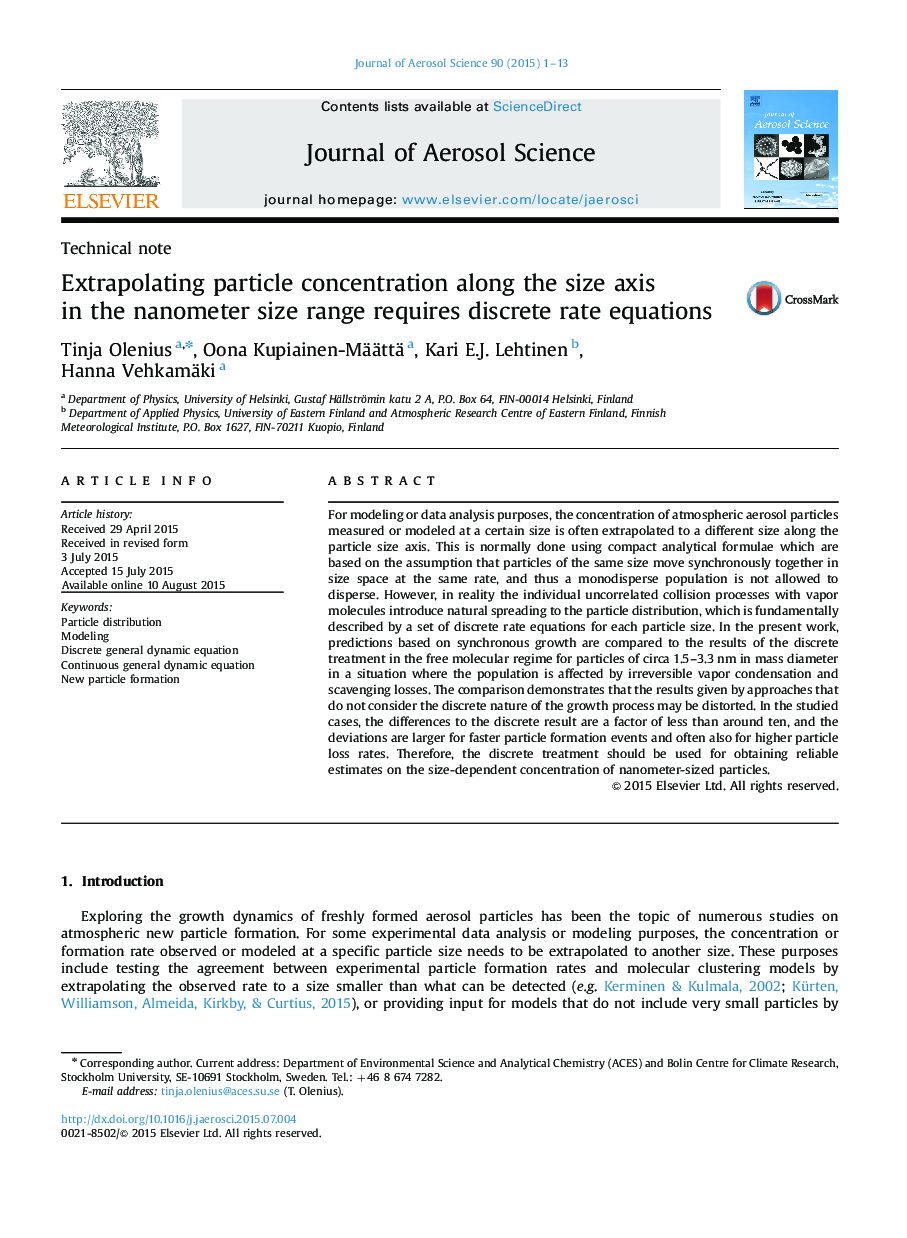| Article ID | Journal | Published Year | Pages | File Type |
|---|---|---|---|---|
| 6344398 | Journal of Aerosol Science | 2015 | 13 Pages |
Abstract
For modeling or data analysis purposes, the concentration of atmospheric aerosol particles measured or modeled at a certain size is often extrapolated to a different size along the particle size axis. This is normally done using compact analytical formulae which are based on the assumption that particles of the same size move synchronously together in size space at the same rate, and thus a monodisperse population is not allowed to disperse. However, in reality the individual uncorrelated collision processes with vapor molecules introduce natural spreading to the particle distribution, which is fundamentally described by a set of discrete rate equations for each particle size. In the present work, predictions based on synchronous growth are compared to the results of the discrete treatment in the free molecular regime for particles of circa 1.5-3.3Â nm in mass diameter in a situation where the population is affected by irreversible vapor condensation and scavenging losses. The comparison demonstrates that the results given by approaches that do not consider the discrete nature of the growth process may be distorted. In the studied cases, the differences to the discrete result are a factor of less than around ten, and the deviations are larger for faster particle formation events and often also for higher particle loss rates. Therefore, the discrete treatment should be used for obtaining reliable estimates on the size-dependent concentration of nanometer-sized particles.
Related Topics
Physical Sciences and Engineering
Earth and Planetary Sciences
Atmospheric Science
Authors
Tinja Olenius, Oona Kupiainen-Määttä, Kari E.J. Lehtinen, Hanna Vehkamäki,
